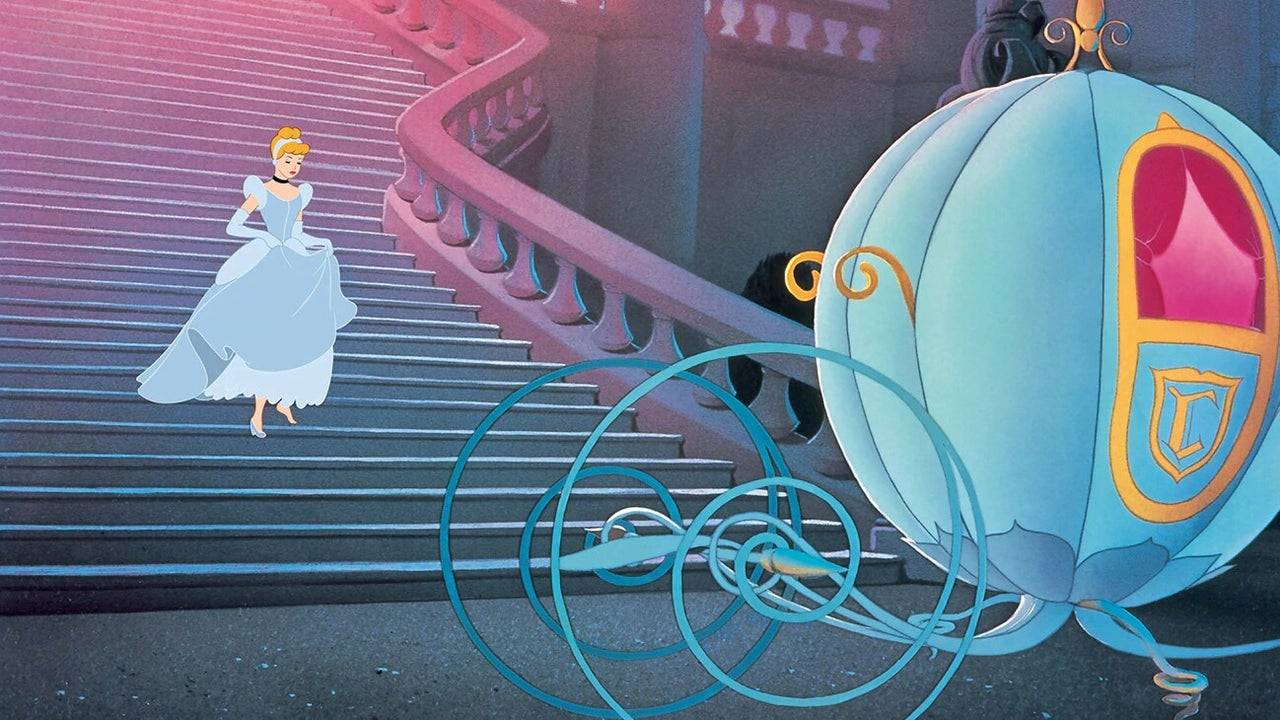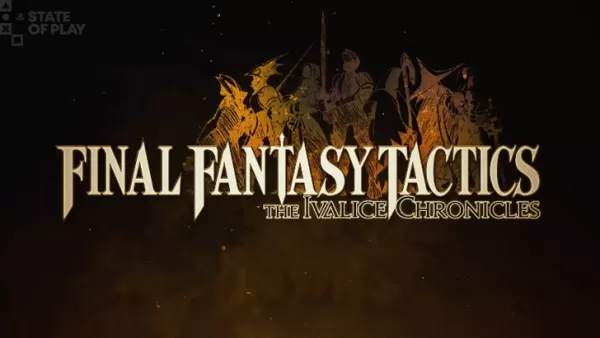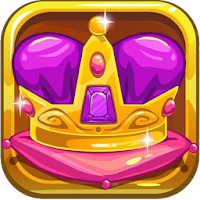Just as Cinderella’s dream was set to end at midnight, so too was The Walt Disney Company's in 1947, grappling with a debt of roughly $4 million due to the financial flops of Pinocchio, Fantasia, and Bambi amid World War II and other challenges. Yet, it was this beloved princess and her iconic glass slippers that saved Disney from prematurely concluding its animation saga.
As Cinderella celebrates its 75th anniversary of its wide release today, March 4, we connected with several Disney insiders who continue to draw inspiration from this timeless tale of rags to riches. This story not only echoes Walt Disney's personal journey but also rekindled hope within the company and a post-war world seeking something to believe in once more.
The Right Film at the Right Time --------------------------------To understand the context, we must revisit Disney's fairy godmother moment in 1937 with Snow White and the Seven Dwarfs. Its monumental success—remaining the highest-grossing film until Gone with the Wind surpassed it two years later—enabled Disney to establish its Burbank studio, still its headquarters today, and paved the way for more feature-length animated films.
However, Disney's next venture, Pinocchio in 1940, despite its critical acclaim and winning two Academy Awards, incurred a $1 million loss on a $2.6 million budget, significantly higher than Snow White's. The subsequent releases, Fantasia and Bambi, similarly underperformed, exacerbating the company's financial strain. The primary cause was Germany's invasion of Poland in September 1939, which ignited World War II.
“Disney's European markets vanished during the war, and films like Pinocchio and Bambi couldn’t be shown there, leading to poor performance,” Eric Goldberg, co-director of Pocahontas and lead animator on Aladdin’s Genie, explained. “The U.S. government then enlisted Disney to produce training and propaganda films for the Army and Navy. Throughout the 1940s, the studio resorted to creating Package Films like Make Mine Music, Fun and Fancy Free, and Melody Time. These were excellent projects but lacked a cohesive narrative from start to finish.”

Package Films were compilations of short cartoons assembled into feature films. Disney produced six of these between Bambi in 1942 and Cinderella in 1950, including Saludos Amigos and The Three Caballeros, which supported the U.S.' Good Neighbor Policy aimed at curbing Nazism's spread in South America. While these films managed to break even, and Fun and Fancy Free reduced the studio's debt from $4.2 million to $3 million by 1947, they hindered the production of true feature-length animated stories.
“I wanted to return to feature films,” Walt Disney stated in 1956, as documented in The Animated Man: A Life of Walt Disney by Michael Barrier. “However, it required substantial investment and time. A quality animated feature demands both. My brother [Disney CEO Roy O. Disney] and I had a heated argument… It was a major upset for me… I insisted we either move forward, re-enter the business, or liquidate and sell out.”
Faced with the prospect of selling his shares and leaving Disney, Walt and his brother chose the riskier option, betting everything on their first major animated feature since Bambi in 1942. Failure could have meant the end of Disney's animation studio.
"At that time, Alice in Wonderland, Peter Pan, and Cinderella were in various stages of development, but Cinderella was chosen first due to its similarities to Snow White. Beyond that, Walt believed this story could offer more than just entertainment," said Tori Cranner, Art Collections Manager at Walt Disney Animation Research Library. "Walt had a keen sense of the times, recognizing America's post-war need for hope and joy. Unlike the beautiful yet somber Pinocchio, Cinderella embodies joy and the possibility of emerging from adversity with something beautiful."
Cinderella and Disney’s Rags to Riches Tale
Walt's connection with Cinderella dates back to 1922 when he created a Cinderella short at Laugh-O-Gram Studios, which he founded two years before starting Disney with Roy. This short, inspired by Charles Perrault’s 1697 version of the tale, which may have originated between 7 BC and AD 23 by the Greek geographer Strabo, encapsulates themes of good versus evil, true love, and the realization of dreams, deeply resonating with Walt.

“Snow White was a kind and simple little girl who believed in wishing and waiting for her Prince Charming,” Walt Disney remarked in Disney’s Cinderella: The Making of a Masterpiece special DVD feature. “Cinderella, however, was more pragmatic. She believed in dreams, but also in taking action. When Prince Charming didn’t appear, she went to the palace to find him.”
Cinderella's strength and resilience, despite the mistreatment by her Evil Stepmother and Stepsisters after losing her parents, mirrored Walt's own journey from humble beginnings filled with failures and challenges, yet driven by an unwavering dream and work ethic.
This story remained with Walt through Disney’s early days, leading him to revive it as a Silly Symphony short in 1933. However, its scope grew, and by 1938, the decision was made to develop it into a feature film. Despite a decade-long delay due to the war and other factors, this time allowed the film to evolve into the beloved classic we cherish today.
Cinderella's success can be attributed to Disney's ability to transform these timeless tales into stories with universal appeal. “Disney excelled at reimagining these age-old fairy tales, infusing them with his unique taste, entertainment value, heart, and passion,” Goldberg noted. “These tales, often grim cautionary stories, were made universally enjoyable, modernizing them for all audiences and ensuring their longevity.”
Disney achieved this in Cinderella with the introduction of her animal friends—Jaq, Gus, and the birds—adding comic relief and allowing Cinderella to express her true self. The Fairy Godmother, reimagined by animator Milt Kahl as a bumbling, grandmotherly figure rather than the regal fairy from Pinocchio, became more relatable and endearing, culminating in the iconic transformation scene where Cinderella’s belief in herself and her dreams transforms her life.
The animation of Cinderella’s dress transformation, often cited as Walt’s favorite, was meticulously crafted by Disney Legends Marc Davis and George Rowley. “Every sparkle was hand-drawn and painted on each frame,” Cranner highlighted. “The magic moment where the stardust holds before her dress changes is what makes that scene truly enchanting.”
Another unique Disney addition was the breaking of one glass slipper at the film’s end, emphasizing Cinderella's agency and strength. “Cinderella isn’t a passive character; she has personality and strength,” Goldberg emphasized. “When the slipper breaks, she presents the other one she had kept, showcasing her control and resilience.”
Cinderella premiered in Boston on February 15, 1950, and its wide release on March 4 later that year was a resounding success, earning $7 million on a $2.2 million budget—the best box office performance for Disney since Snow White. It secured three Academy Award nominations and was the sixth-highest grossing film of 1950.
“When Cinderella was released, critics hailed it as a return to form for Walt Disney,” Goldberg said. “It was a massive success, rekindling the studio's passion for narrative features. Following Cinderella, Disney developed films like Peter Pan, Lady and the Tramp, Sleeping Beauty, 101 Dalmatians, and The Jungle Book, all thanks to Cinderella’s triumph.”
75 Years Later, Cinderella’s Magic Lives On
Seventy-five years on, Cinderella's legacy continues to resonate deeply within Disney and beyond. Her iconic castle stands prominently at Walt Disney World and Tokyo Disneyland, and her influence is evident in the studio's modern classics, such as the highly watched dress transformation scene in Frozen.

“When animating Elsa’s dress transformation in Frozen, we wanted a direct connection to Cinderella,” Frozen 2 and Wish lead animator Becky Bresee shared. “The sparkles and effects around Elsa’s dress pay homage to Cinderella, honoring the impact of the films that came before.”
The contributions of the Nine Old Men and Mary Blair to Cinderella's distinctive style and character cannot be overstated. Yet, perhaps Eric Goldberg's reflections best encapsulate why Cinderella was the right film at the right time, saving Disney when it was most needed.
“The essence of Cinderella is hope,” Goldberg concluded. “It instills the belief that perseverance and strength can lead to a brighter future, that dreams can indeed come true, no matter the era.”
















